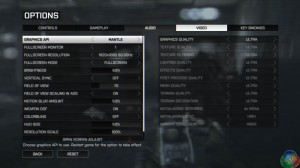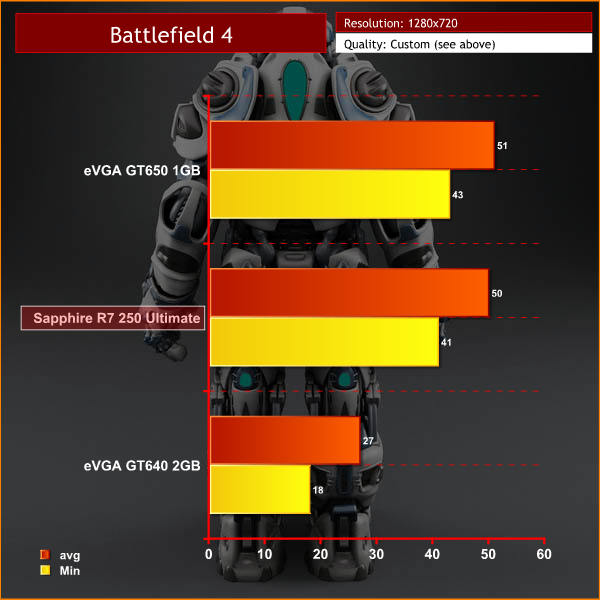Battlefield 4 (also known as BF4) is a first-person shooter video game developed by EA Digital Illusions CE (DICE) and published by Electronic Arts. The game is a sequel to 2011′s Battlefield 3. Battlefield 4 is built on the new Frostbite 3 engine. The new Frostbite engine enables more realistic environments with higher resolution textures and particle effects. A new “networked water” system is also being introduced, allowing all players in the game to see the same wave at the same time. Tessellation has also been overhauled.

We test the Sapphire R7 265 in both ‘Direct X’ and ‘Mantle’ modes and compare against the new GTX750 Ti cards and the Gigabyte GTX650Ti. We are using the latest patch as of 12th February 2014.

Generally, a good experience, although a couple of environmental locations do force a frame rate, close to, and a little below 25 frames per second.
Tags Asus GTX 750 Ti Asus GTX 750 Ti 2GB Asus GTX 750 Ti 2GB Review Asus GTX 750 Ti review asus GTX750ti Nvidia GTX 750 Ti Nvidia GTX 750 Ti review Nvidia GTX 750Ti Nvidia GTX750 ti Nvidia GTX750 ti review Review
Check Also
The Division 1 gets surprise PS5 patch adding 60fps support
In a surprise announcement, Ubisoft revealed that the original Division 1 has gotten a current-gen patch to allow for 60fps gameplay.
 KitGuru KitGuru.net – Tech News | Hardware News | Hardware Reviews | IOS | Mobile | Gaming | Graphics Cards
KitGuru KitGuru.net – Tech News | Hardware News | Hardware Reviews | IOS | Mobile | Gaming | Graphics Cards



Good card, but yeah no need for a 6 pin power connector. my own MSI card sits at 1,200mhz and doesn’t need it.
ull need it if gets unlocked or u get a bios mod
Sure would have like to have a R7 260X represented, while the extra Higher end 270X up taken out just to not complicate things. Your B-M don’t paint that great of picture, largely due to the higher setting. It just isn’t realistic for that grouping of cards to expect advanced setting on 1920x. Would rather see adjusted settings that keep the 1980x average more in the 35-45Fps “playable” range. I mean to drop £131.99 [$180 USD] and only get entry level seem unimpressive, sure the power is low but IDK.
Here’s my thinking it’s nothing more than an “entry gaming” card that’s basically the reincarnation of the HD 5670 from 4 years ago. Same basic “plug-n-play” card that permits “medium” settings on (what was at that time) the mainstream 1680x resolution. Today that resolution is clearly 1080p, but now the price has jumped like 110%… that’s not progress, it’s just a 5670 for today… and today entry gaming has an exorbitant price!